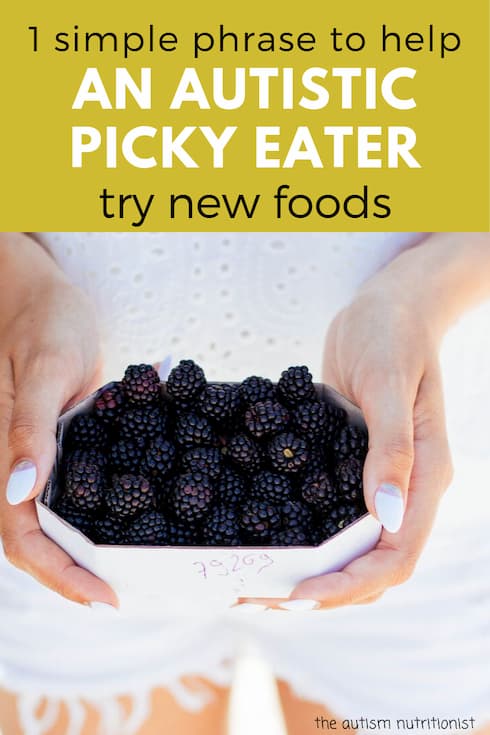
You can cajole, beg, ask, plead, sing, and dance to get your child to try new foods.
These techniques are something every parent has tried.
But they’re not the ones that really work.
Instead, these techniques can make your child feel pressured to taste something they don’t feel ready to eat or even interact with.
An Alternative to Begging your Picky Eater to Eat
I recommend a no pressure approach when it comes to feeding picky eaters.
I suggest using the Division of Responsibility for feeding with families in my coaching programs. In this method, when it comes to meals and snacks, parents or caregivers decide what is being served, where it is being served, and when it is being served. It is the child’s responsibility to decide if they’re eating and how much they want to eat.
This approach is all about letting your child decide when they are ready to eat and encourages a positive mealtime environment – two things that can help improve your child’s picky eating.
While this approach seeks to minimize the pressure that can be so tempting to use at mealtimes, it doesn’t mean that you can’t talk about food in a way that might help your picky eater eat better.
This technique is helpful for all picky eaters, especially those on the more severe end of the autism spectrum.
Create Connections Between Safe and New Foods
Kids on the autism spectrum sometimes have trouble noticing similarities between two foods. An inability to generalize means they might not see how two different foods can feel or taste similar.
One way that you can help to ease their discomfort without adding pressure to eat is by highlighting connections.
Share how two foods are similar. Maybe it’s their color, taste, texture, or look.

Why This Picky Eating Technique Works
Picky eaters often avoid foods when they don’t know what to expect from the eating experience.
Highlighting the similarities between foods can make a new food seem more familiar.
It can also help your child understand what to expect when they are ready to finally eat.
Both of these can encourage your picky eater to try new foods.
Having more information and being able to understand food in a concrete way can help your child try new foods.
Recap
Avoid pressuring your child to eat. This can backfire and rarely works in the long run. Instead, educate your child by demonstrating how a new food is similar to foods they like to eat. This helps all picky eaters understand what to expect when eating a new food and is especially helpful for autistic kids who have difficulty generalizing.
Homework
When serving new foods, look for similarities with foods your child currently eats. Try this script: “This is _______. It is _______ like the _______ that you like. You don’t have to eat it if you’re not ready yet.”



0 Comments